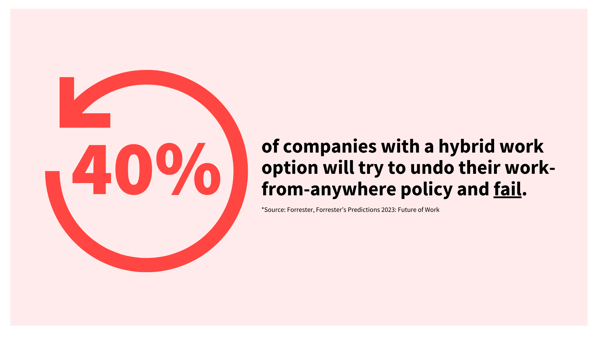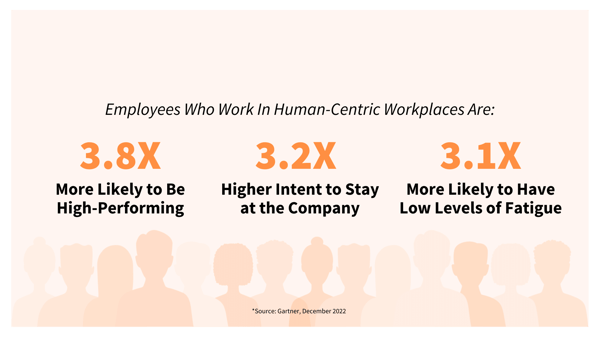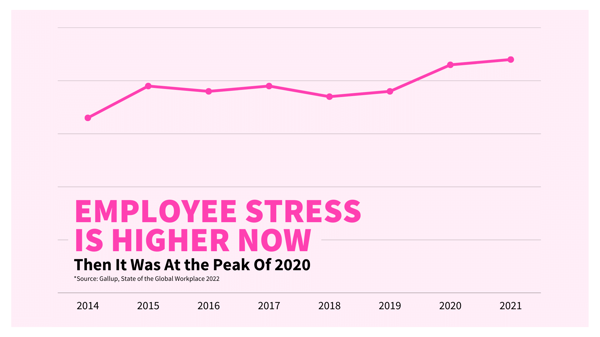8 min read
12 Leadership Roles That’ll Make You a Star in the Eyes of Your Team
Leaders wear many hats. From inspiring your employees during a team meeting to proving motivation and encouragement in challenging times and ...
4 min read
 Michelle Bennett
:
Nov 1, 2022 5:00:00 AM
Michelle Bennett
:
Nov 1, 2022 5:00:00 AM

The way we work has changed - forever. Granted, even before the events of 2020, the way businesses operated, employees worked, and leaders led was evolving in response to industry disruptors, globalization, digital innovations, and employee expectations. These forces demand agile leaders who can change direction and tactics at a moment’s notice. The speed at which leaders and their teams can do so is defining the winners and losers of this new era.
Critical aspects of work previously not in the job description for people leaders a few years ago are now regular conversations at the boardroom table and actively sought out. These shifts pressure organizations in the private and public sectors to respond and highlight how being a leader is more complicated now than ever.
In 2023, those in people leadership are encountering challenges they’ve never experienced. Here are four reasons why leaders find themselves in new and challenging situations.
Passively acknowledging the current trends and new challenges impacting the world of work is not an option for those leading people. That’s because these trends are reshaping the rules and expectations of leaders and organizations, thus changing what’s required to succeed. As such, here are a few prominent workplace trends currently at play.

Before the pandemic, there was a steady shift toward remote work. For example, in 2019, more than half of on-site workers wanted to start working remotely. Meanwhile, in 2023 McKinsey found that 87% of workers who are offered at least some remote work embrace the opportunity and spend an average of three days a week working from home. Clearly, a preference for remote work already existed; the pandemic merely confirmed it for many on a massive scale.
Some organizations have embraced the preference towards remote work by becoming 100% remote. At the same time, others have taken a blended approach that allows employees to be in the office only part of the time or requires full-time back to the office, which is putting people leaders in the most challenging position of being sandwiched between senior leaders’ decisions and the demands of their employees. Add in a tight talent market, and people leaders feel the pressure to keep their employees engaged and motivated like never before while towing the company line as they wrestle with and implement new policies.
Exasperating the issue is that organizations struggle to find the correct answers to work arrangements. This was found in Forrester’s Predictions 2023: Future of Work report found that 40% of companies with a hybrid work option will try to undo their work-from-anywhere policy and fail.

Employees’ expectations of their leaders and their work environment are changing. For example, in a study by Gartner, it was found that 82% of employees feel it is important that they’re seen as a whole person at work, not just an employee.
There is a shift going on from company-first to employee-first. Niagara Institute did a deep dive into the topic in the guide The Case for Upskilling: How the pandemic has Exposed Skill Gaps in the Workplace. The guide highlighted how a significant shift in organizations had put pressure on the way people leaders engage their employees.
The old playbooks on leadership are gone. Instead, employees want human-centered leaders, which Josh Bersin defined as, “Leaders who understand what makes people thrive, what drives creativity and problem-solving in the company, and how they can support people during times of change, stress, or disruption.”
These new demands require a whole new set of leadership competencies in 2023 that people leaders need to develop and do so quickly. For example, Gartner found that employees who work in human-centric workplaces – where they are seen as people, not just resources – are 3.8x more likely to be high performing, 3.2x more likely to have a high intent to stay at the company, and 3.1x more likely to have low levels of fatigue.

With the initial fear and uncertainty the pandemic produced, one would think our stress level would start to lessen as the immediate threats subside. However, this isn’t the case. Gallup uncovered that the level of stress employees experienced was higher in 2022 than the peak in 2020, with almost 60% of those surveyed reporting they’re stressed on the job every day.
To address the level of stress and the impact it is having on our mental well-being, employees are looking to their organizations and leaders for help adding new pressures on people leaders that they’ve never experienced before. For instance, Calm’s 2023 Workplace Mental Health Trends Report found that a staggering 67% of those surveyed said their employers should help them take care of their stress and anxiety.

The current workforce is dominated by millennials (35%) and generation X (35%), followed by generation Z (14%), and baby boomers (6%). Each of these generational groups has different expectations of the organizations and the management styles of the leaders they work for, as well as the nature of their work. This makes it difficult for people leaders to navigate the diverse expectations and values of their individual team members.
In a paper published in the Journal of Diversity, Dr. Mecca Salahudin explains the different expectations by generation, highlighting the challenges of leaders in finding the right approach that works when leading individuals from up to four different generational groups.
Baby Boomers: This group tends to be more positive regarding leadership and hierarchy and is willing to respect authority if the leader takes their opinion and contribution into account when making decisions. They value leaders who acknowledge their achievements, involve them in solving organizational problems, and change initiatives as a team.
Gen X: This group tends to be more self-reliant and self-motivated than other generations. They are skeptical and unimpressed with authority and leadership. They admire leaders who are competent and honest with their employees, as they may, too, come across as straightforward, blunt, and brutally honest.
Millennials: This group tends to be assertive with their views as they have unlimited access to information that forms their opinions, thanks to Google. They value relaxed and flat hierarchies where they feel empowered to share their ideas and thoughts with others and work as a team to solve problems. Millennials value leaders that move at the same pace that they do. They appreciate continuous and instant feedback, even praise in public, to confirm that what they do matters.
Gen Z: This group is the newest and, therefore, the least-known generation in today’s workforce. Gen Z expectations are different. A Deloitte study found that Gen Z tends to value organizations whose values align with their own and are flexible in their work environments. Gen Z values leaders who promote diversity and inclusion, encourage individuality, personalize their approach, and allow them to work how they like and where they like.

8 min read
Leaders wear many hats. From inspiring your employees during a team meeting to proving motivation and encouragement in challenging times and ...

7 min read
Whether you call it the great resignation or the great upgrade, the impact is a record number of individuals leaving their employer for a new company...
.png)
7 min read
Did you know that 52% of voluntary resignations are avoidable? As the Gallup study that found this states, “People leave because of fixable issues.”...